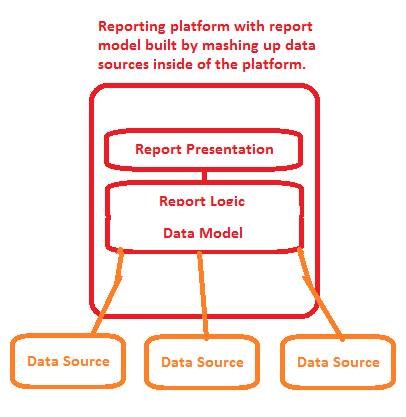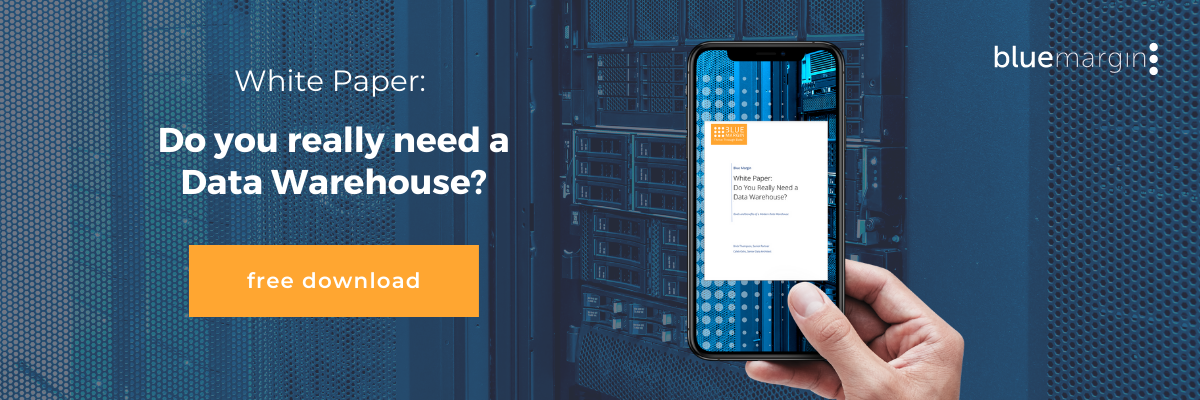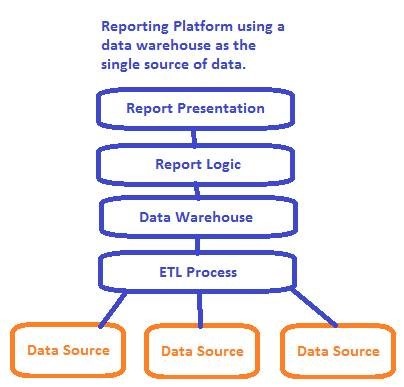Data warehouses sound like a pain. And if you don't have a data architect on staff (who has the rare gift of diagramming data warehouses with Denver Broncos colors), you may wonder if they're only the domain of uber-technical companies. However, you might be surprised to learn that data warehousing is accessible to virtually any business, and is likely the foundation for spurring new growth and profitability at your company.
But first, the basics. What is a data warehouse?
A data warehouse is your company’s data, pulled from various sources (e.g., accounting, CRM, ERP, Sage, Excel, etc.), centralized and organized in a single database for the purpose of reporting, backup, and security. It is the single source of truth for all of your data and the essential nucleus of a data-driven business.
There are many reasons for a company to build a data warehouse, but those reasons often sound purely academic, and expensive.
Until you consider technical debt (and the recent advancements in SaaS that make data warehousing more practical, accessible, and affordable than ever before, by at least an order of magnitude).
What is technical debt, you ask?
Technical debt is the expense that comes later as a result of taking shortcuts now. Without a data warehouse, you're left with "mashing up" your data into files (typically Excel files, but also files for any reporting or business intelligence tool you may use). In this "mashup" scenario, the really painful cost comes when you want to add or change data sources, or change reporting platforms. Heck, even updating your business software can break your reporting (which can be expensive to fix).
Here is something to help you visualize this. Using your reporting tool to mashup your data, your data architecture will look a lot like this:
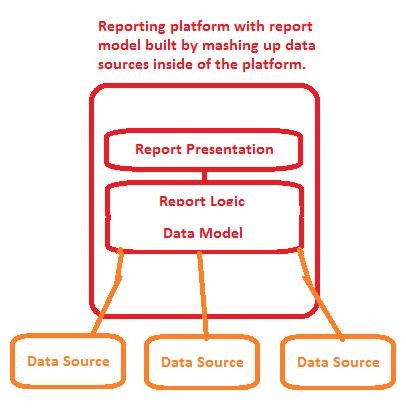
In academic terms, this means your Data Model inevitably ends up encapsulating your report logic; and all of that in turn is encapsulated by the reporting platform, tightly binding the Report Logic containing the Data Model to the Report Presentation layer.
Download Now: Data Warehouse Best-Practices Whitepaper
In non-academic terms, this means that if you ever want to change one piece of the puzzle, you end up having to change all of the pieces (remember those old TV/VCR mashup units? Same issue). Also, if you add a field or column to your CRM or accounting system, for example, your mashup tool will simply return an error. This also means that if you ever want to migrate to a new reporting platform, chances are you’ll be able to reuse very little of your work.
But, if you use a Data Warehouse, your architecture will no longer look like the above classic “bad example” and will instead take on a better structure (and Bronco colors):
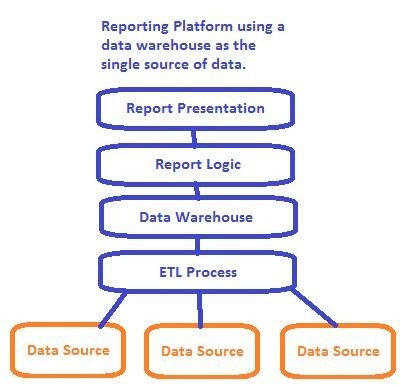
With a Data Warehouse, no single tier of your architecture is tightly tied to another. You can change out your ETL platform on a whim, save money by switching your line-of-business software, or maybe switch the reporting platform to something prettier. Whatever the change, you only need to worry about that one component, rather than the entire stack. And if you add or delete a column from your CRM or accounting tool, your reporting will still work (though it will need updating to bring in the new data).
Make sense?
Next time, we will dive into more specifics about the benefits of data warehousing and how you can avoid other costly pitfalls. If you want to go to school, we recommend The Data Warehouse Toolkit, 3rd Edition, by Ralph Kimball.
If you are interested in how a data warehouse can benefit your unique environment, contact us anytime. We promise to be helpful.
 Your Colorado Microbrew Recommendation:
Your Colorado Microbrew Recommendation:
Black Bottle Brewing Company – Karma Payment Plan (ABV 5.5%)
Wondering about investing in a data warehouse? Well then, Karma Payment Plan is just the beer for you. Pour yourself a nice mug of this tasty IPA, with its hints of grapefruit. Or maybe pour two, because once your data warehouse is up and running, you'll gain back all those the days you used to spend creating spreadsheets and reports.

